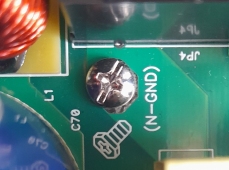TerryBarnaby
New Member
- Joined
- Oct 12, 2022
- Messages
- 8
Hi, I have recently purchased an Iconica 3000 24V MPPT "hybrid" inverter that I intend to use as a sort of UPS for some computer systems and/or to power some garden features with mainly Solar input, batteries and extra mains charging.
I tested it at work and it seems a reasonably sturdy piece of kit and appears to work fine although cheap. It seems like there are a few similar clones of this design around.
However I just tested it at home by powering its AC IN input from a 13 Amp socket at my house and it tripped an RCD immediately. On checking its terminals it has AC IN with earth, neutral and live and AC OUT with neutral and live. The earth terminal was connected to the case as expected but the earth was also internally connected to both the AC IN and AC OUT neutral lines.
We live in the countryside in the UK and have a TT mains system which has live and neutral from the grid and separate local earth rods. The neutral can be quite a few volts different to ground with the separate overhead wires and others sharing the transformer etc. so tripping the RCD when the inverters Earth is connected to the neutral would be expected depending on line condition when connected.
Is it expected that these types of UPS/off-grid inverters would have their AC IN and OUT neutral lines shorted to earth internally ?
I tested it at work and it seems a reasonably sturdy piece of kit and appears to work fine although cheap. It seems like there are a few similar clones of this design around.
However I just tested it at home by powering its AC IN input from a 13 Amp socket at my house and it tripped an RCD immediately. On checking its terminals it has AC IN with earth, neutral and live and AC OUT with neutral and live. The earth terminal was connected to the case as expected but the earth was also internally connected to both the AC IN and AC OUT neutral lines.
We live in the countryside in the UK and have a TT mains system which has live and neutral from the grid and separate local earth rods. The neutral can be quite a few volts different to ground with the separate overhead wires and others sharing the transformer etc. so tripping the RCD when the inverters Earth is connected to the neutral would be expected depending on line condition when connected.
Is it expected that these types of UPS/off-grid inverters would have their AC IN and OUT neutral lines shorted to earth internally ?




